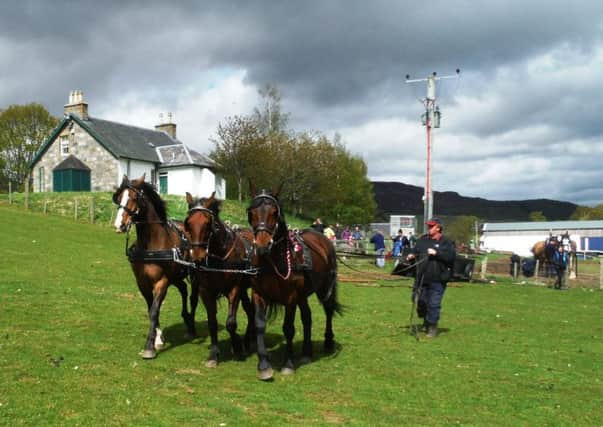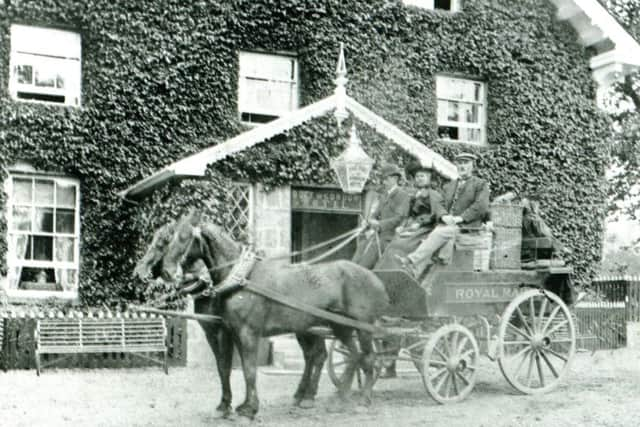Highland horse teams re-enact mail coach run


The re-run, called Mail Coach 100, will see four teams of horses running separate nine-mile stages along a 36.5-mile route in Badenoch.
A return trip will then be made by a motorised charabanc which replaced the Badenoch mail coach in 1915.
Advertisement
Hide AdThe event will re-enact deliveries, with letters being exchanged by children at primary schools throughout the region.


By the end of the 19th century coaches had become outdated throughout most of the country with improved rail links and the introduction of motor cars.
But they continued in the north of Scotland until modernised rail connections were introduced.
Event organiser, Ruaridh Ormiston, owner of Newtonmore Riding Centre, said: “I took up coach driving 30 years ago, so I have always had a keen interest in it.
“I knew from the old museum at Kingussie the old mail coach had run until World War One. I researched it and found it was actually the last horse drawn mail coach in the country.”
As well as being joined by paying visitors on the trip, Ormiston will be joined by four grandsons of the last coachman, James Gillies, who had recounted to them tales of his time on the mail coach.
Advertisement
Hide AdThey will also show their grandfather’s old notebook, while one, Gillies Campbell, will tell the stories passed down to him.
The coaches will visit the MacPherson Museum, which has Gillies’ old pistol, which he carried to protect him from mail robbers.
Advertisement
Hide AdOrmiston said: “We have also found the niece of one of the last passengers. Bella Macdonald, who was 14, boarded the last coach at Tulloch Station to travel to look after her failing granny at her croft near Nethy Bridge. “She never left Nethy and eventually inherited the croft and then passed it on to her niece, Marina Dennis, who is well-known in crofting circles.
“Marina will accompany us to tell stories and to speak to Roy Bridge School, where Bella’s brother taught for about 30 years.”
Dennis said: “My aunt left her parents’ croft to help with a family croft in Strathspey. She remained on the croft for the next 75 years of her life. I inherited the croft in 1985 and remain there.”
Ormiston will also have an old-style mail sack to carry the letters between children at primary schools in Laggan, Newtonmore, Kingussie and Roy Bridge. And in addition to the four teams of horses, there will be a proper coach guard and coach horn blower, who will be dressed in period costume.
The horses used for the last stagecoach journey were commandeered for use in the First World War where eight million horses died on both sides.
Seats on the coaches are being sold for £30 each with proceeds going to Cairngorms Riding for the Disabled, based at Newtonmore Riding Centre. The charity is hoping to set up its own carriage-driving section for disabled visitors.
Advertisement
Hide AdThe mail coach began making deliveries in the UK from 1784. The coach was drawn by four horses and had seating for four passengers inside. Further passengers were later allowed to sit outside with the driver. The mail was held in a box to the rear, where a Royal Mail guard stood.
They were first introduced thanks to John Palmer, a theatre owner from Bath, who believed mail being delivered by horseback was inefficient and vulnerable to robbery.
Advertisement
Hide AdPalmer realised that the coach service he had previously used to transport actors and materials between theatres would be ideal for a countrywide mail delivery service.
He suggested to the Post Office in London that they take up the idea. He met strong resistance, but eventually the then Chancellor of the Exchequer William Pitt allowed him to carry out an experimental run between Bristol and London. Pitt then gave permission for the new service.